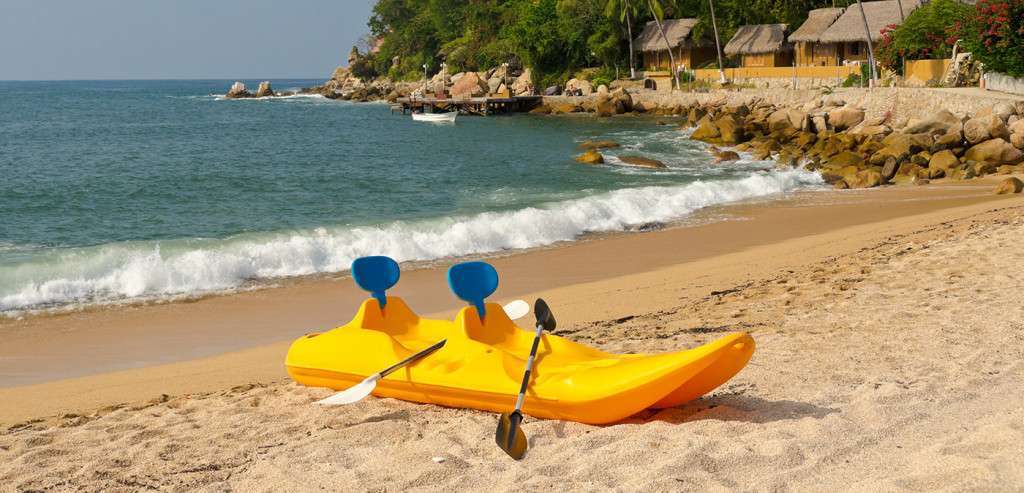The right rack system makes transporting a boat easy and safe. Here’s how to match the carrier to the boat, vehicle, and paddler.
Kayakers need a way to transport their boats, and the right rack can make the least fun part of paddling easier. Thule and Yakima make a variety of excellent products for this purpose.
Anatomy of Thule and Yakima Roof Racks
Thule and Yakima are well known manufacturers of rack systems, and their roof racks are made up of at least three components that are purchased “ala carte.” Their basic racks are made up of the following:
- Mechanical Fasteners – the interface connecting the rack to the roof (which Thule calls trackers or feet, and Yakima, towers). Both make connectors that can be installed on a bare roof or factory installed side rails.
- Load Bars – heavy duty bars on which the boat rests. These should match the width of the vehicle. These bars are designed to carry multiple boats, unlike plastic factory racks. Load bars are either round or square.
- Cradles – attach the boat to the bars.
Both manufacturers offer optional locks to prevent theft of a rack system that can easily cost $400.
Choosing the Right Car Top Carrier: Boat Orientation
A kayak installed on a roof rack is carried either on its side (in a J-rack) or hull side down (in saddles or rollers) and the best orientation depends on a number of factors, including the size of the boat(s), the size of the vehicle, and the strength of the boat handler (and his or her wallet).
J-Shaped Racks – Kayaks on Edge
The J-Shaped rack that carries a kayak on its edge tends to be the least expensive. In addition, by transporting a boat in this way, it is possible to fit two very wide boats on even the narrowest vehicle.
The disadvantages include the added height that makes the boats more difficult to load, as the kayak must be lifted well above the front hook of the J. Only the strongest paddlers can lift the lightest boats single-handedly onto a J-Rack. In addition, this type of rack adds a foot or two to the height of the vehicle, which may make it impossible to park in garages. However, by loosening the connecting brackets, J-racks mounted on round load bars can be repositioned to lie on their sides when not in use. Both manufacturers offer J-racks that can fold flat but these cost more.
Saddles & Rollers – Hull Side Down
Transporting a boat on its bottom requires either two sets of saddles, a pair of saddles and a pair of rollers, or two pairs of rollers, and to protect the vehicle’s paint job, a bath mat or throw rug with a non-skid backing. By sliding the boat on the rug, and up the back of the car, a single paddler can load even a long and heavy boat. One pair of rollers in the back makes it even easier. This carrier has a lower profile and will fit in most garages
While this method is the easiest, it also has disadvantages. The parts are costlier than J-racks, and depending on the width of both boat and vehicle, there may be room for only one kayak. Also this method could be a problem for shorter paddlers who may not be able to reach high enough to settle the boat in the saddles.
Buying a Roof Rack System
Thule and Yakima have websites with an interactive feature that provide the information necessary to build a rack. Responding to a series of prompts about the age, make and model of a vehicle will generate a list of required components, and optional accessories. These can be purchased online or from local dealers. A roof rack can be installed by the dealer for a fee, or by a paddler with a little time and patience.

